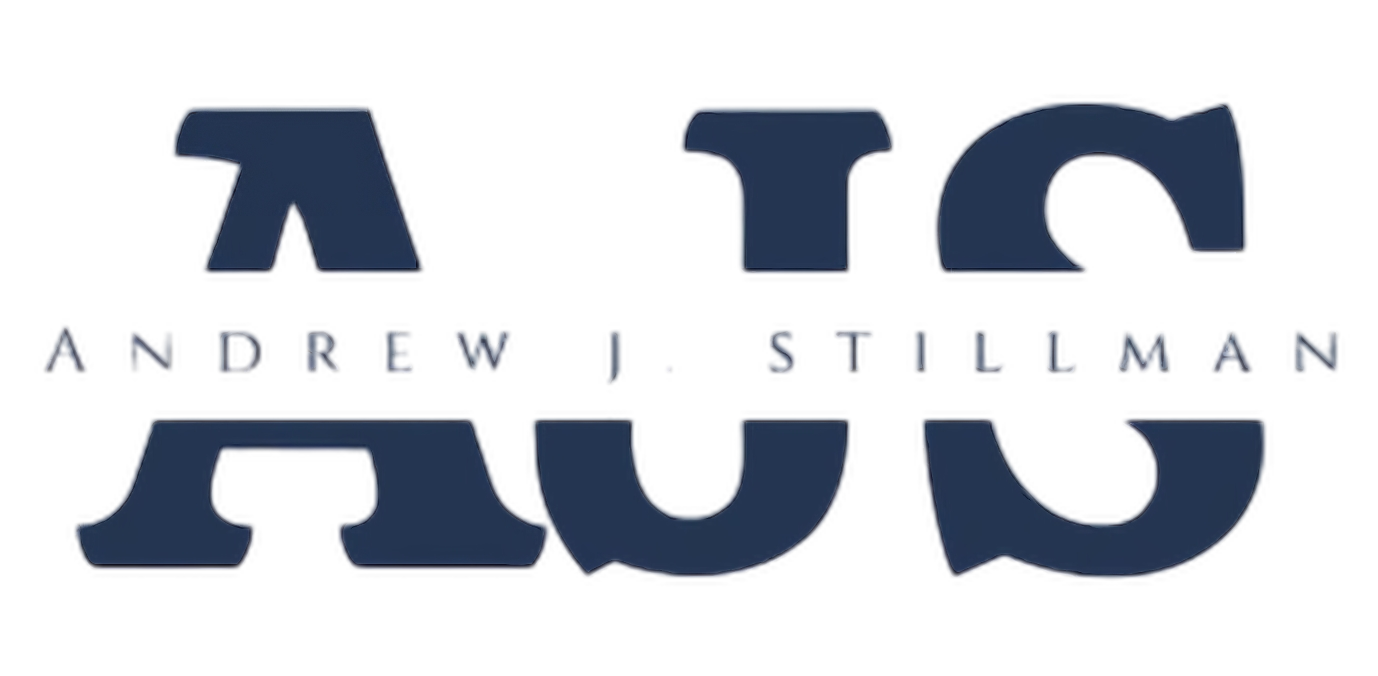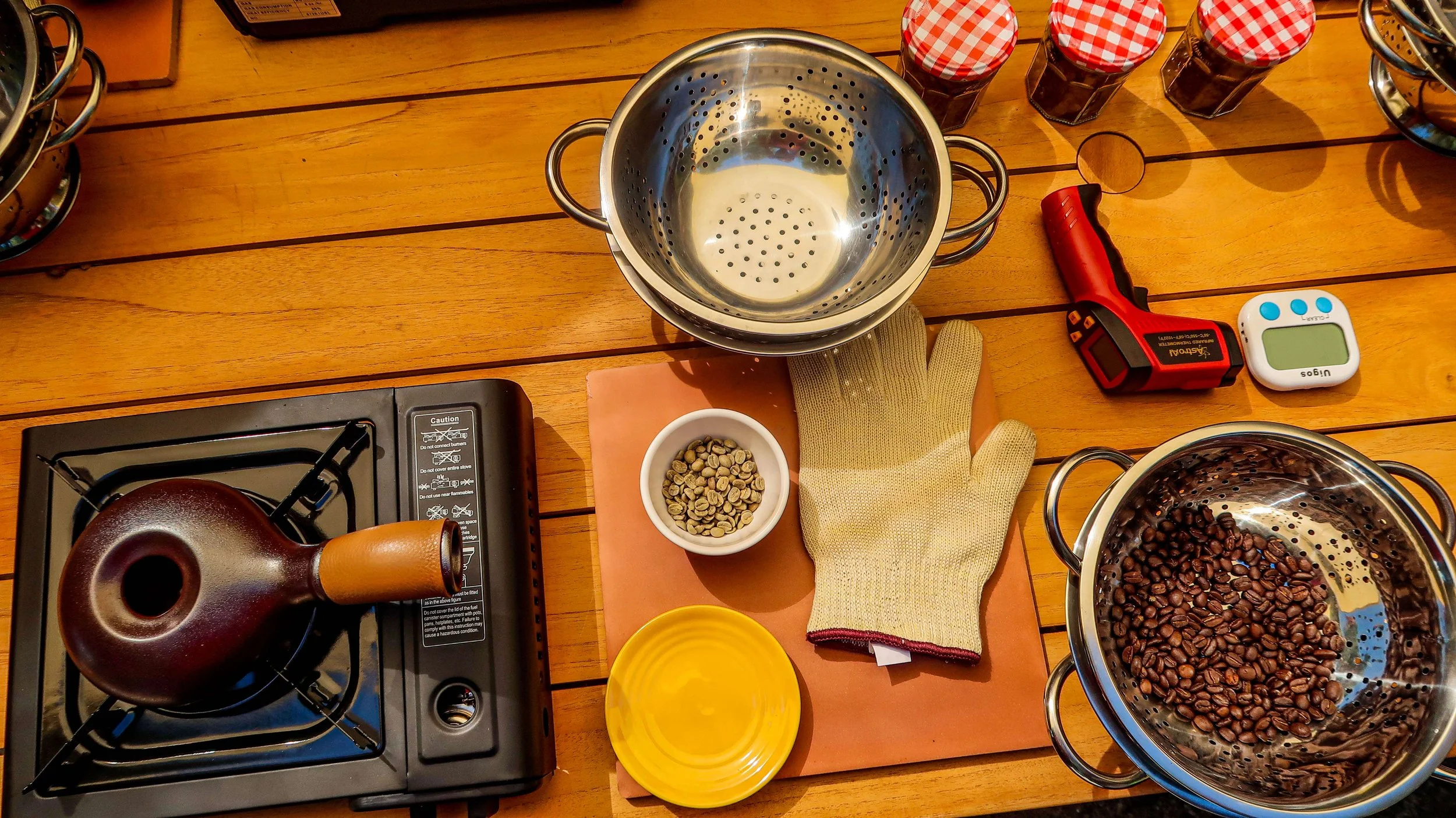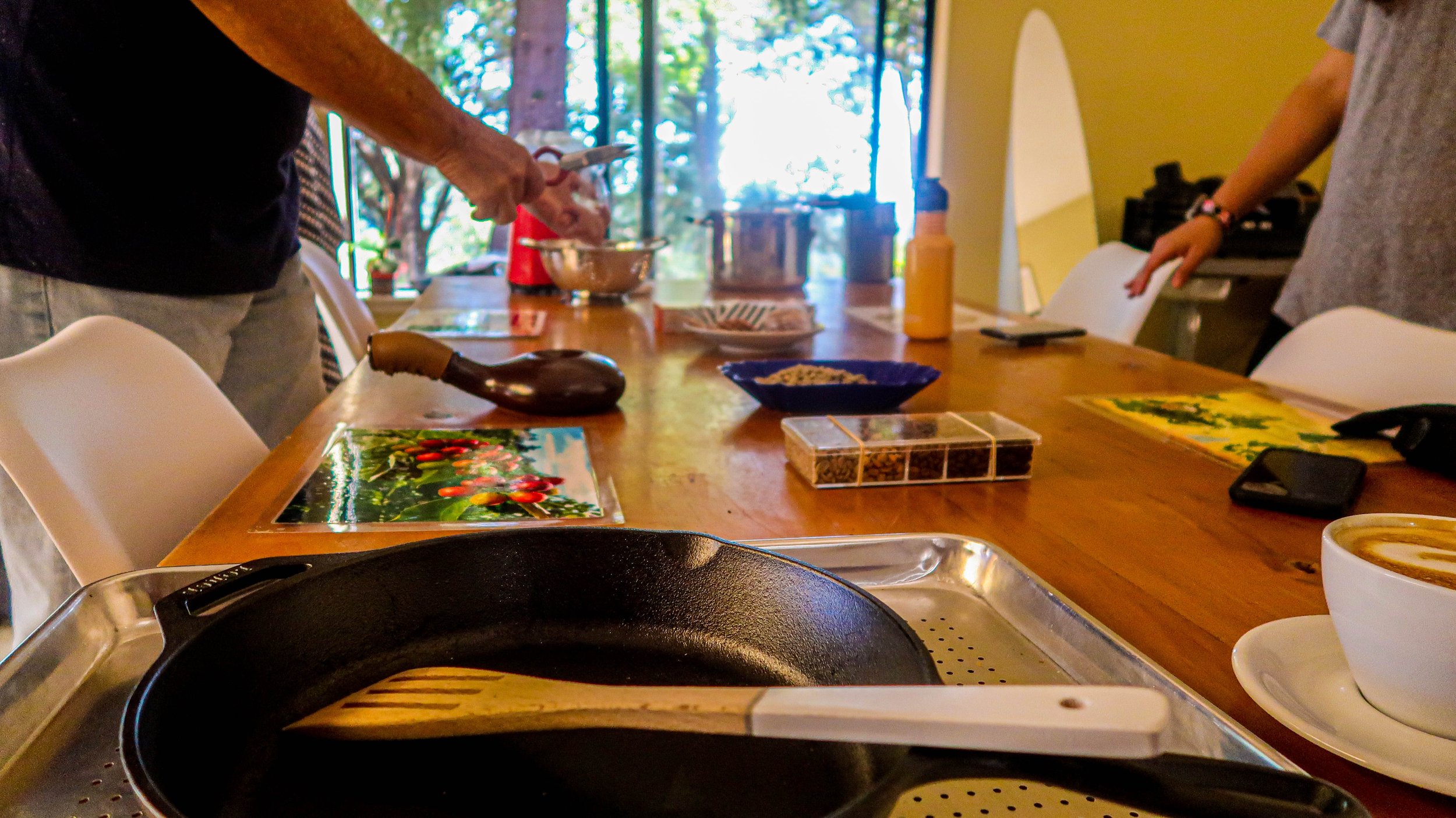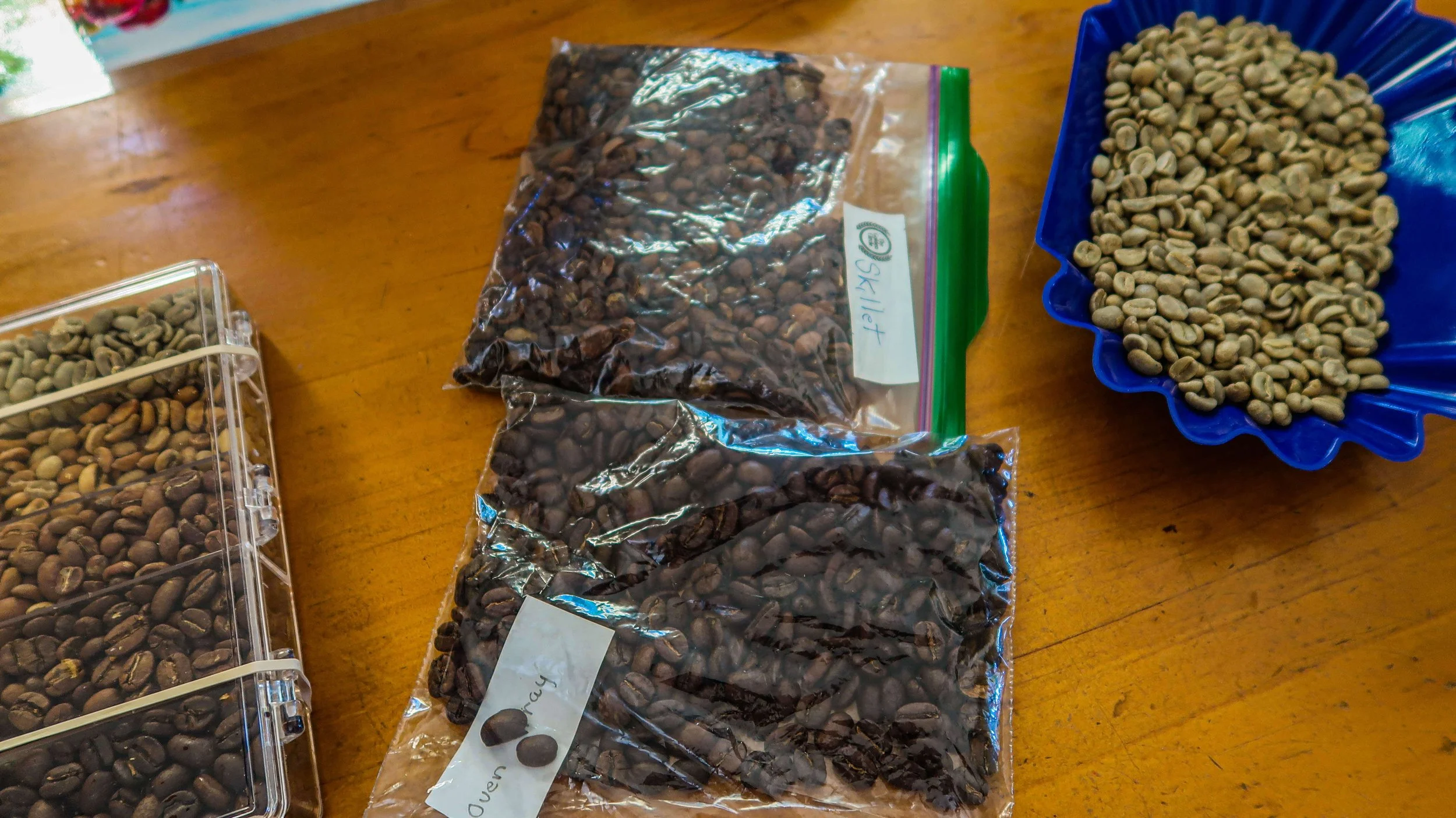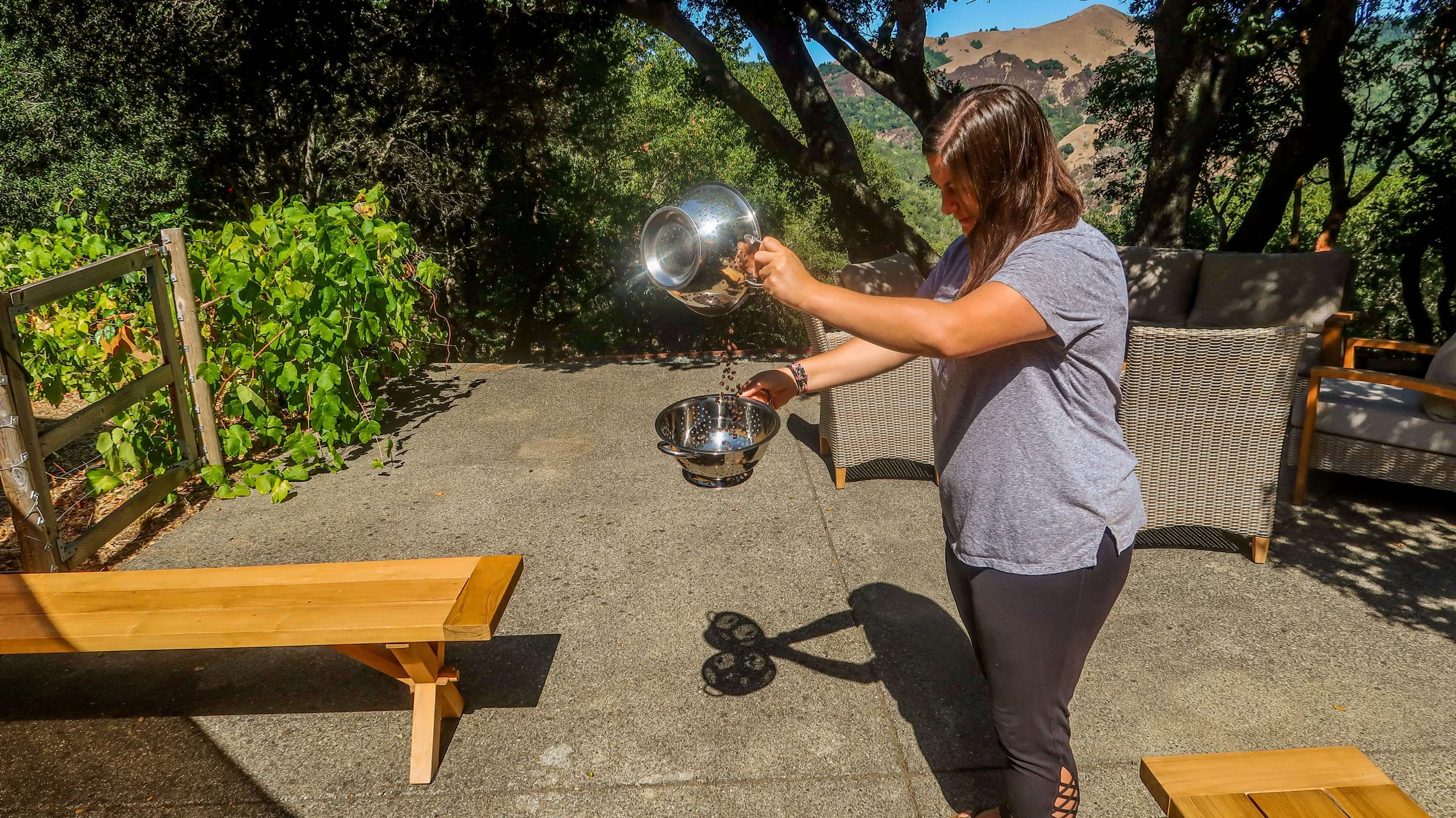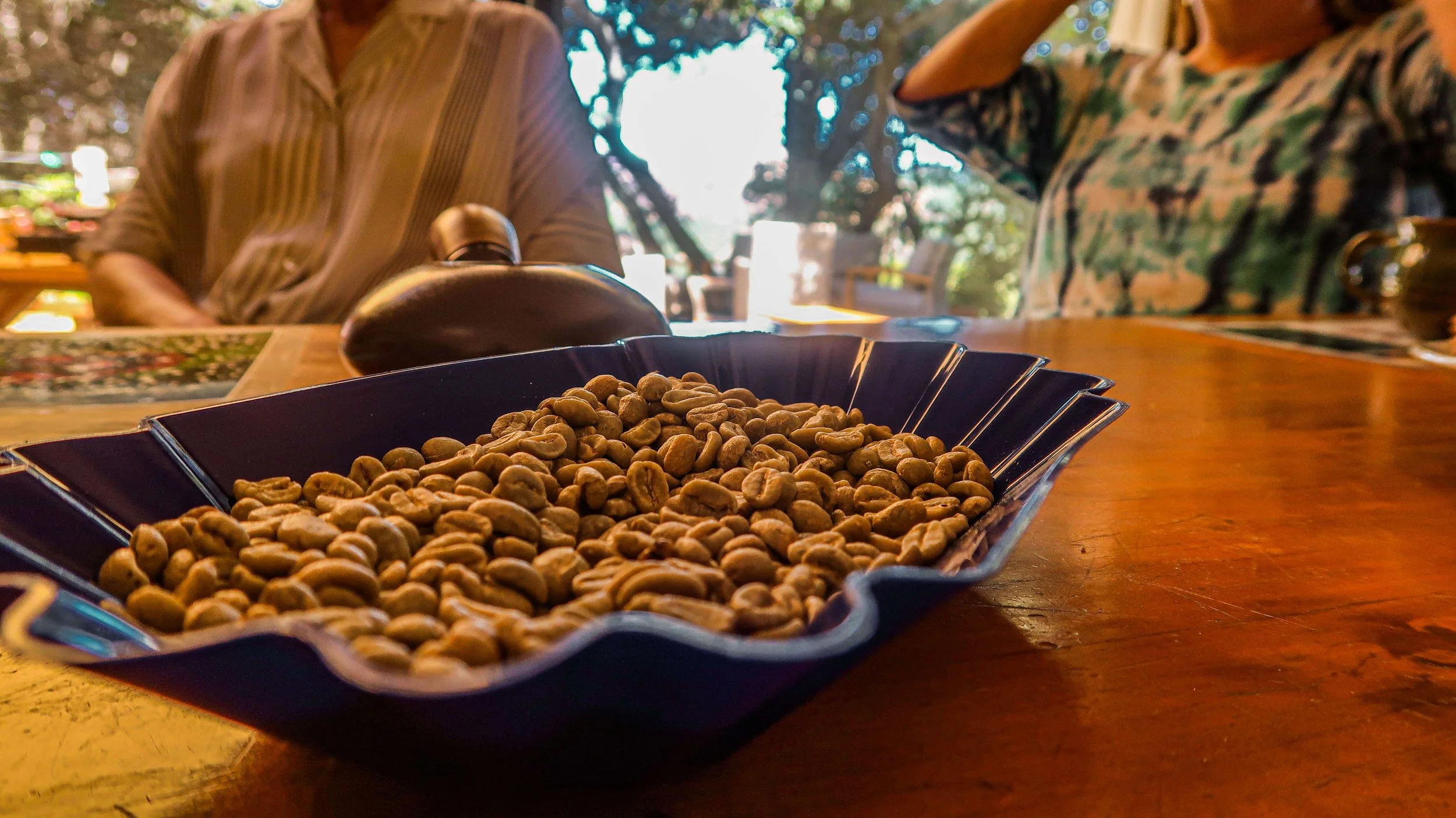
How to Roast Your Own Coffee
Think roasting your own coffee is difficult? Let Dan Gorman of Punto Fino Coffee Company prove you wrong!
If you’ve ever wondered about ways to roast your own coffee at home, Dan Gorman and his wife, Donna, of Punto Fino Coffee Company have an awesome class in Fairfax, California that will teach you everything you need to know! Don’t worry, any method of roasting coffee won’t cost you more than $40! Through Dan’s Roast Your Own Coffee AirBNB experience, you can learn all the tricks of the trade.
Discovering how to roast coffee
As for Dan, discovering how to roast his own coffee came part from research, part from a need for better coffee. After a Starbucks bought out his favorite coffee shop in San Francisco’s financial district, he found himself upset with his other coffee options once the last of the beans they’d purchased from the shop ran out. Back then, in about 1998, there weren’t options for online learning from YouTube or other social media platforms, so he hit the online forums after Donna encouraged him to start researching ways of roasting coffee.
Now, the duo buy raw coffee beans by the pound (you can simply Google the options, but they often go with Oakland-based Sweet Maria’s Coffee) and know a lot about the ins and outs of roasting coffee. Through his research, Dan found that about 150 years ago, home roasting was the only way people could get their coffee. If you lived in a more urban area, you might have gotten lucky with a local roaster, but there weren’t any actual coffee shops.
The history of roasting coffee
In the earliest days of coffee roasting, all you needed was a regular, flat-iron skillet, some raw green coffee beans, some heat, and some agitation. Nowadays, of course, roasters have commercial equipment to roast in large batches, but the original method still holds up just as well. The beans, however, can’t just sit in the skillet and roast or they’ll burn, so you have to constantly push them around with either a spatula or just holding the handle of the skillet and spinning it in constant motion. If you’re interested in this method, make sure you turn on the exhaust fan, because it gets smoky!
The biggest downside in this method is how heavy the skillet gets after a while. All it takes, though, is a single layer of beans, ten minutes of stirring and shaking them, and you're good to go.
Experimenting with coffee roasting
While Dan tried the skillet method first, after growing tired of it, he researched other ways of roasting. Some trial and error taught him you could also roast the beans on an oven tray to save yourself some of the manual labor. This method, too, has some pros and cons. While you can get more beans out of one batch and it’s another ten-minute process, it also produces more smoke and doesn’t really let you agitate the beans, which raises the risk of burning them.
The best way to accomplish this method is to preheat the oven to about 550 degrees, or as high as it goes, for about 30 minutes. That way, when you open the oven to stir or shake the beans, you don’t lose that much heat.
Comparing methods of coffee roasting
In comparison to the skillet method, which Dan found gave him some light beans, some dark beans, and any variation in between, he discovered that roasting in the oven provided a more nice and even result. Although he stuck to this method for a while before the desire for experimentation got the better of him, and he looked again for other methods of roasting. He heard of the dog bowl method that’s used with a dog bowl and a heat gun. He didn’t have a dog bowl, but he did have a colander, so he gave that a go. That solved the problem of the heaviness with the skillet, but allowed him to get back to the agitation of the beans. Additionally, if you saw some beans that weren’t as roasted, you could focus on just those.
Something to keep in mind, however, is that there’s a tiny skin on the coffee beans called silver skin. As soon as the beans heat up, the skin starts to peel. When there’s an airflow, they shoot up all over the place, and that’s called chaff. This is the messiest part of the job, so doing it either outside or in a device that separates the chaff for you is the best way to alleviate this.
A surprising method to roasting your own coffee
One device you might not expect to be helpful in roasting coffee and separating the beans from the chaff is a good, old-fashioned popcorn maker. That option has two different methods to consider:
1. The "Whirley-Pop"
If you use the original “whirley-pop,” you can only put one layer of beans on the bottom. Otherwise, the beans get on top of each other and you only roast what's on the bottom row. Because the coffee bean doesn’t flower or pop, there’s not really anywhere else it can go, either. Once the beans are in, spin the lever like a jack-in-the-box until you've reached your desired bean color.
2. The Air-Popper
Alternatively, you can use an air-popper to churn the beans and heat them simultaneously. In the air-popper, you just have to agitate the beans long enough for the machine to get going before it does all the work for you. Another advantage here is that the coffee beans stay inside the machine, but it blows out the chaff and separates all of that for you. If it sounds intimidating, don't worry -- this is the first method Dan demonstrates for you!
In roasting, the beans get up to about 500 degrees, so you have to be careful and pay attention to how long they’ve been over the heat because they roast quick. Also, pay attention to the color. Lighter, medium, and darker roasts, all require different lengths over the heat.
Visual and audio cues for roasting coffee
When you put the beans in to start roasting, there are visual and audio cues to help you understand where you are in the roasting process. Coffee beans in the green state have about 10% moisture content, so when they’re put over heat, the moisture starts to evaporate, they get lighter in weight, and they start to lose their green color and become more yellow. At that point, they’re at about 150 degrees internally.
There’s hundreds of estimated chemical reactions created and destroyed during the roasting process. One of those, called the Maillard reaction, is typical for all food — when it’s subjected to heat, it starts to brown. Just beyond the yellowing phase, the green beans to turn khaki, then tan, then darker tan, and then you get closer to the first audio clue — the first crack.
The most important marker, the first crack, signifies that, at this stage, the coffee is actually roasted, and it can stop. It’s a very light roast after the first crack, and that’s when you can grind it with no worries and drink it with a good flavor. The moisture is leaving the bean, and as it leaves the cell walls, it cracks.
The importance of the cracks
Not every bean starts at the same time, so you might hear a couple of cracks, then a pause, then a rolling crack when they’re all going at once. This takes about 30-90 seconds, so it’s a range of time that it occurs. If you want the beans a little darker, continue to roast until it gets into the medium color, and that’s when it starts to smell more like coffee, whereas in the beginning — especially when they’re still green beans — it smells more vegetal, like hay or grass.
Beyond the medium roast, you enter the area of “the second crack.” Here, CO2 gas forms and comes out of the bean. It’s not as pronounced as the first crack, but it’s a very important point because from here, the roast can suddenly accelerate very quickly. Once the beans hit a good dark roast, you have to make sure not to burn them!
After that, the next most important part is the cooling of the beans. They have to start cooling very quickly, within at least the first three minutes, or they just continue to roast. You cool the beans by using colanders and dumping the beans back and forth between the colanders until they’ve cooled off. That cools the beans, and also helps separate the rest of the chaff that’s leftover.
Try coffee roasting for yourself!
If all of this sounds complicated or intimidating, don’t worry — Dan shows you how these all work, and you even get to try roasting beans for yourself in his backyard! Even better, you not only get to take home the beans you’ve roasted to try them out for yourself, but he even gives you a bag of raw green beans to try out for yourself at home! The next time you’re in the San Francisco area, this is a great activity, especially for those looking to get away from the touristy spots.
My dark roast -- tasted good when all was said and done!
